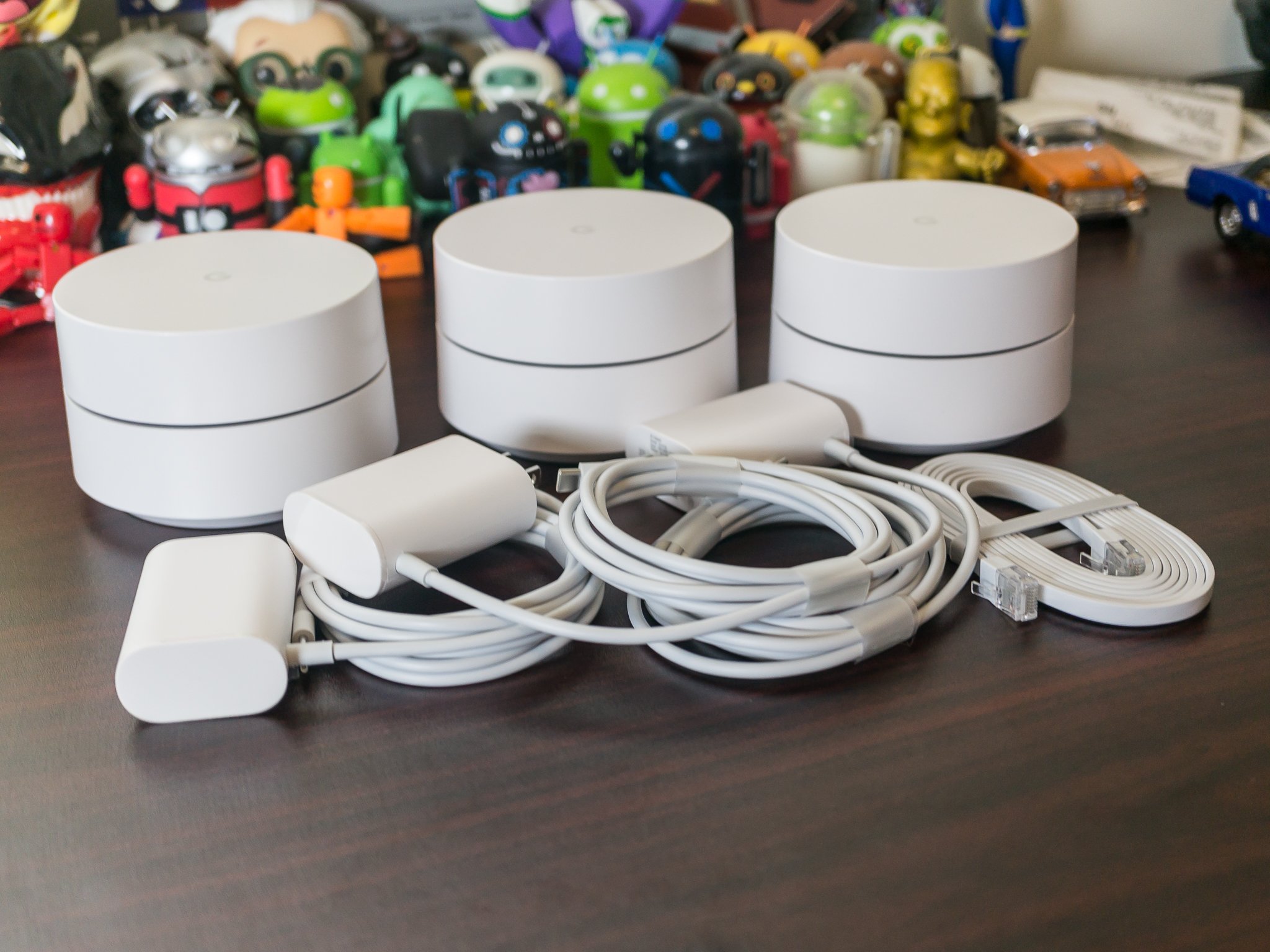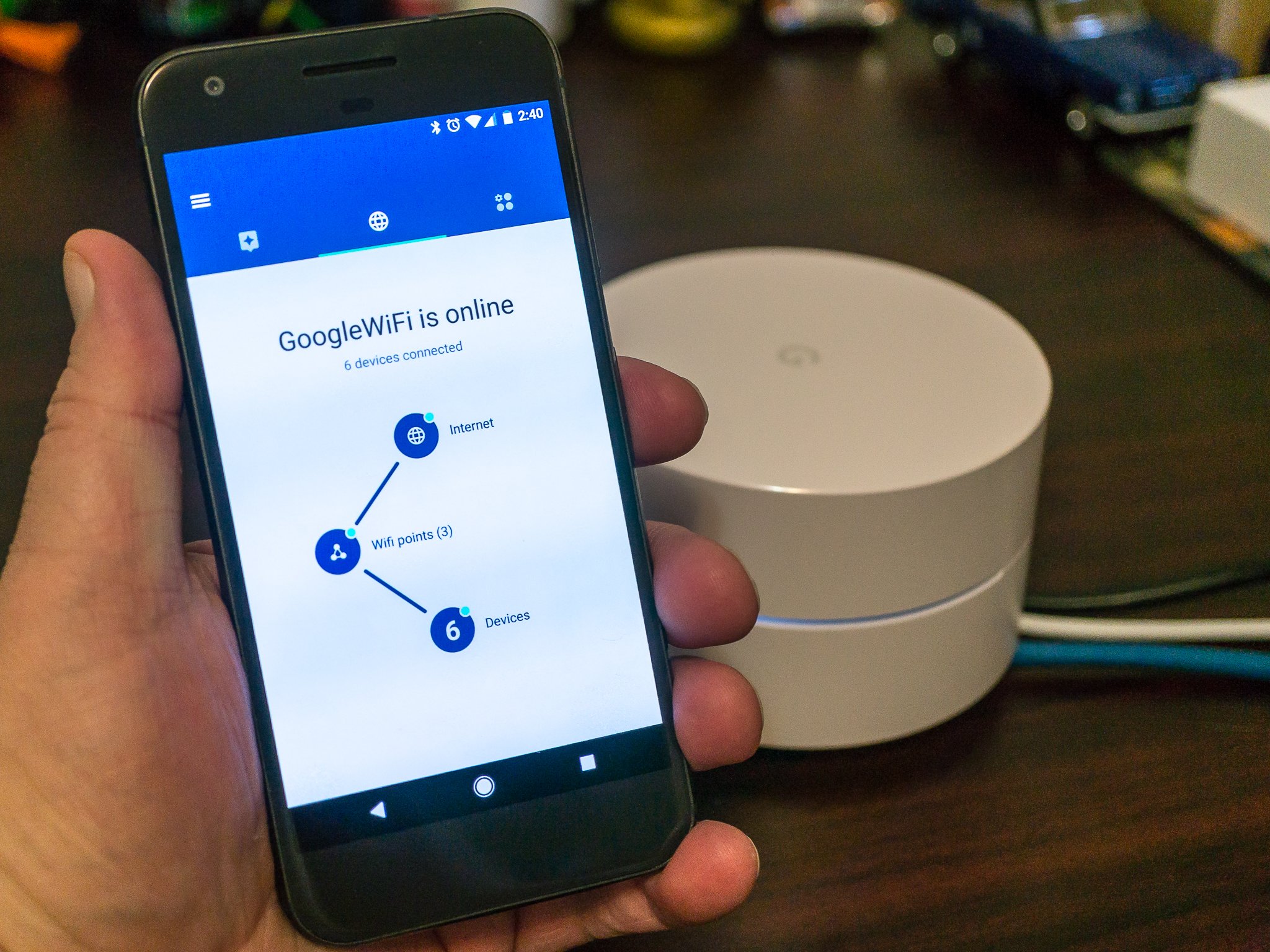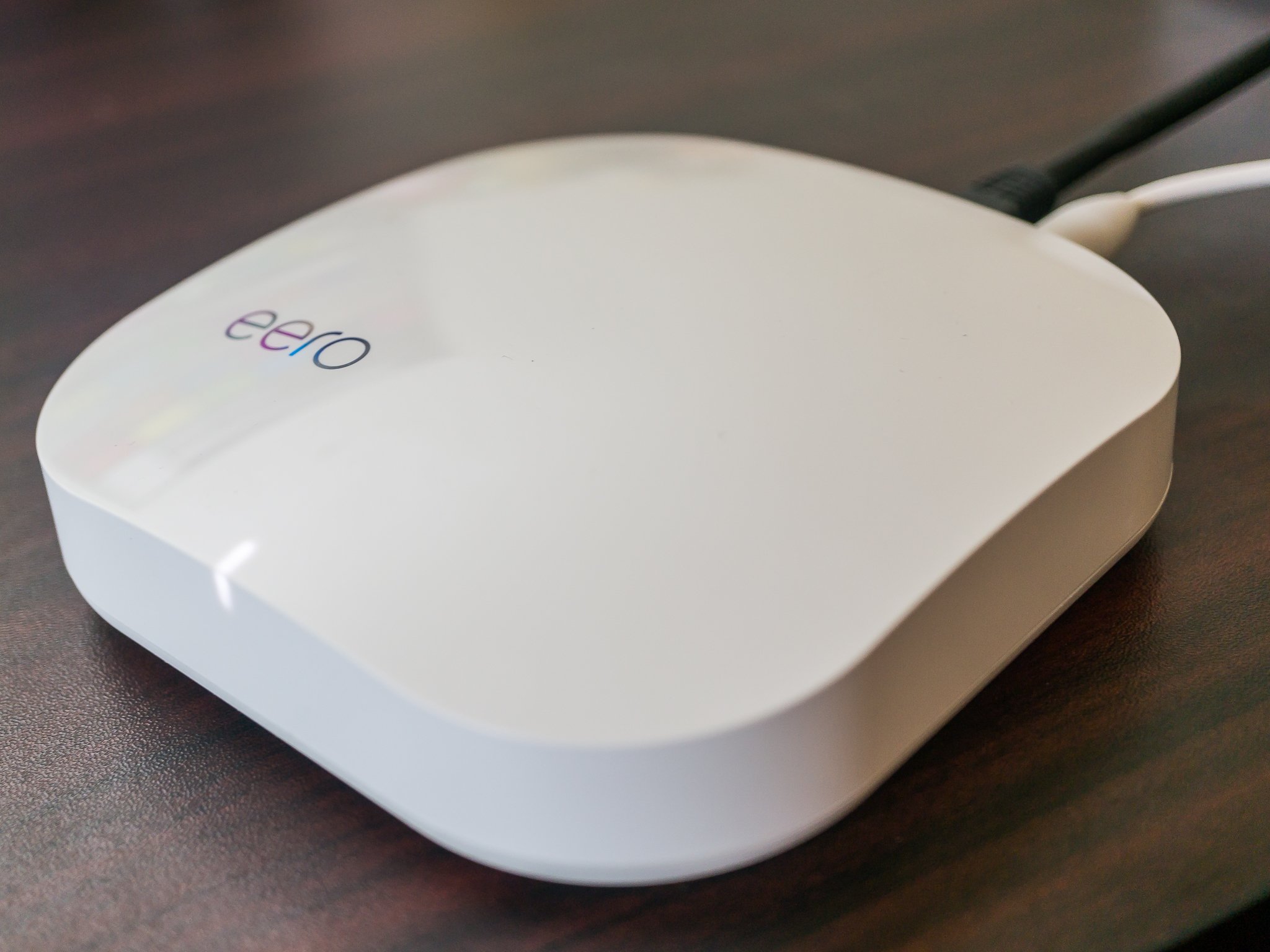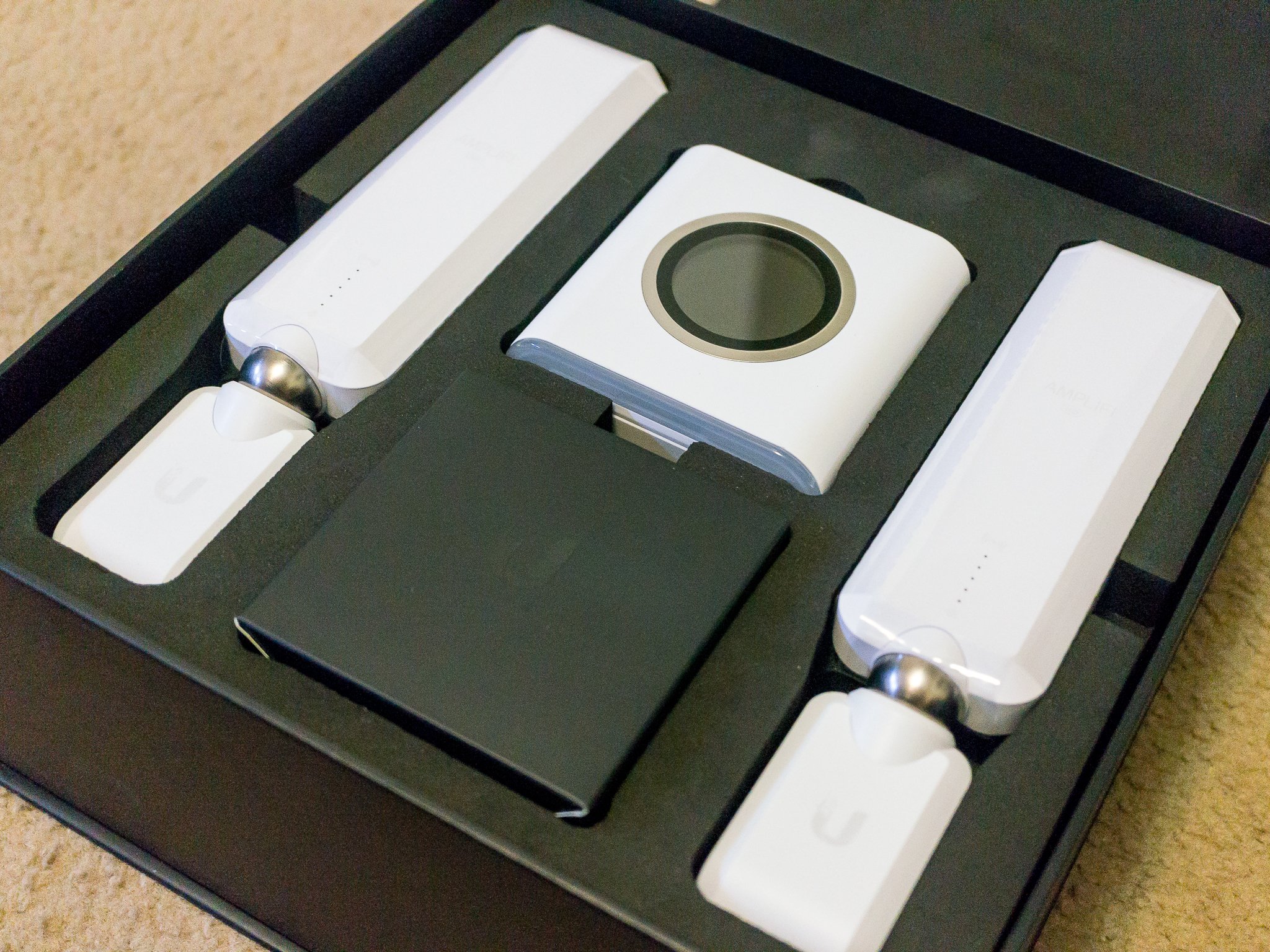There are some great mesh systems to choose from; which is the right one for you?
Most people don't put enough thought into their wireless router. Things like the layout of your house, how its built, and how many stories it is all matter when you want good Wi-Fi from one end to the other. Or maybe you need to plug something into a router with a network cable in one room but still want great Wi-Fi everywhere else. With so many things to get connected and so many different ways to connect them, having a good home network is important. Naturally, we all want our Wi-Fi to be fast and strong, and we're quick to fuss when it's not. Even when it's our own fault.
This is where Wireless Mesh networking comes into play. Sometimes one central wireless access point that sends out a powerful signal in all directions is perfect. But often a mesh system that can smother everywhere in your home with a Wi-Fi signal is better. There's a big difference between Wi-Fi in your house that works and Wi-Fi in your house that works well.
Router vs. Mesh Networking: What's best for your home Wi-Fi network?
If you've decided to go with a mesh system, you're then faced with the question of which you should buy. None of them are cheap and most of us don't want to perform a few multiple-hundred dollar experiments. We're going to look at four popular models and give you some information so you can make the right choice.
Google Wifi
Google has a vested interest in everyone being on the internet, and they've made a great wireless mesh system to help make it happen no matter where in your house you happen to be sitting. Google Wifi is fast, easy to setup, and even easier to get into the settings thanks to their smartphone app.
Pros
- It looks good — this matters because ideally, you'll have the satellites out in the open where everyone can see them.
- Constant updates
- Setup is so easy it's almost automatic
Cons
- Few advanced features
- Requires a Google account and a smartphone to set up and use
- If you lose a connection to the internet, settings and options are very limited
If you use Google products, you'll probably love Google Wifi. Everything about the product will be familiar, from the way it looks to the way the app works.
Setup is simple. Power up one of the units and connect it to your modem, then download the app (there's a card enclosed in the box that points you in the right direction). You'll get a notification that starts the process with a single tap, then walks you through setting up the other two and gives performance tips.
Each unit covers about 1,200 square feet with a strong signal and moving through your house switches you from one to the next seamlessly. The app has some features like being able to prioritize one device over the others for a set amount of time (perfect for streaming HD video) or parental controls but lacks advanced networking features like dedicated port forwarding. The biggest drawback is what happens if you lose your internet connection — you have very limited access to the settings as they are hosted on your online Google account.
Perhaps the biggest draw of Google Wifi is the prompt updates. They're seamless and a proper update schedule means your network is more secure even if they aren't always filled with new features. Check it out at Best Buy for $259.
Orbi
Netgear's Orbi isn't really a mesh wireless system, but it acts the same way and extends your network by using satellite units. Those sattellites just aren't connected to each other, only the base. It is a tri-band system that will give you fast newtork speeds everywhere in your house, which is what really matters.
Pros
- No account required
- No speed loss from mesh forwarding
- The base and satellitle are pre-programmed to work together
Cons
- It's big
- It's expensive if you need a second sattellite
- Setup can be confusing because there are so many options
First things first — if you need advanced settings on your Wi-Fi network and want a mesh(-like) system, Orbi is the one you want to buy no questions asked. Using your web browser to log into the router brings you to the familiar Netgear setup and admin page that you're probably already familiar with, including options that no other consumer mesh product offers like advanced QoS and forwarding.
With that out of the way, the Orbi system has one other thing going for it that might make a difference — no speed loss because of bi-directional communication. Orbi uses a dedicated band for communication between the units, while some other consumer mesh products use the same band your network data does, which causes a 50% loss in throughput for each "hop." This isn't noticeable for most of us as it's still faster than data can be processed after the loss, but it could make a difference when transferring large files or streaming data inside your network.
There are also two things that aren't great — the sheer size of each unit (easily 3 times bigger than the others on this list) and the price. A three-pack costs about $300 and extra satellites start at $140 for the 1,500 sq. ft. unit.
eero (2nd Gen.)
Eero was one of the first consumer-grade mesh wireless systems, and the second generation system is even better. Like the Orbi, it's a true tri-band mesh system with a dedicated band for communication between devices, but the units themselves are small and look good.
Pros
- Can use an unlimited amount of beacons
- Each beacon looks great
- Easy and secure setup
Cons
- Beacons have no Ethernet ports
- Requires a smartphone to set up
- Limited settings
The eero system is my personal favorite, even though I'm embedded in the Google ecosystem. I'm not recommending it over any of the others, though, because what I liked was the polish of the app and the hardware compared to the competition while using the 2016 model. Things have come a long way for all manufacturers since.
With that out of the way, there is a lot to like about eero. It delivers a fast network even at an extreme distance due to it's dedicated communication band and ability to use as many beacons as you need, and it still looks great with a wonderful smartphone app. Though we do need to mention (once again) that the potential speed loss of not having a tri-band system isn't something you're ever likely to notice. But you will notice a great app.
Set up is also a breeze, and almost as easy as Google Wifi's method. Install the app (and you have to use an app) and it walks you through the entire process using friendly, easy to understand language. If you aren't familiar with networking terms you'll appreciate the friendly touch, and if you are, you'll appreciate how well the company breaks it down for those that aren't.
An eero system is a little more expensive though, with a three-pack (one base and two beacons) costing about $370. And like Google Wifi, there aren't enough settings to satisfy extreme users. One other thing — the beacons don't have any Ethernet ports so if you were planning to run a cable to your entertainment stand or game console, you'll need to connect to a base unit. Extra base units
AmpliFi HD
The AmpliFi HD looks different from the other products on this list. Each satellite plugs directly into a wall outlet like the eero beacons, but each AmpliFi satellite has a directional "antenna" on a swivel. This makes is easier to find a place for them or harder, depending on where you need them. It delivers good, strong whole-house Wi-Fi like the other products on this list.
Pros
- Five Gigabit Ethernet ports on the base like a traditional router
- Smartphone app or account not required
- More advanced settings than eero or Google Wifi
Cons
- Satellites are large and require mounting on a wall outlet
- Satellites have no Ethernet ports
- Satellites aren't as attractive as the competition (but are interesting to some)
The AmpliFi HD boasts a 20,000-square-foot coverage area from a single base and two satellites. Our testing leads us to believe it, as a usable signal extended further down the street than we thought possible. That's enough reason for some of us to buy it — you might also be able to have great Wi-Fi in your workshop or any outbuilding (or share Wi-Fi with your neighbor). Part of this is because of the unique satellite configuration. Rather than a smallish puck designed to sit on a table somewhere, each is a tall, two-piece wand that needs to be plugged directly into an outlet.
There's also a coolness factor missing from the others on our list with AmpliFi's touchscreen display on the base that can monitor network speeds or show the time (it can also be shut off). This can be quite handy if the base is set somewhere like a desk in a home office and can double as a clock, besides having access to some user settings. Speaking of settings, you'll find more advanced ones on the AmpliFi HD than you will on Google Wifi or eero, but not as many as the Orbi. It's a good balance for the average home user with something like a dedicated media server.
One thing to consider here is that the AmpliFi HD isn't exactly childproof. The satellites will be plugged in where a curious little one can reach them and look interesting enough to make sure they notice them. The are two-piece units held together by a strong magnet so they won't be harmed if someone grabs the antenna and tugs on it, but electricity and toddlers don't mix. If you don't have little ones crawling or walking around you might like the look, though. Pricing starts at $313.
Our verdict
It depends a lot on what you're looking for. If you want the most plug-and-play model, Google Wifi is one of those gems that anyone can install. It's also the cheapest option, though a Google account is required and internet access almost a must (and absolutely required for setup). Eero is what you'll need if you need extra beacons, but while they look great they don't have any Ethernet ports for your TV or Xbox and base units (which do have ports) are expensive. Orbi is great for someone running a server or has other needs for advanced QoS and forwarding options, but is big, bulky and expensive. Finally, AmpliFi covers your house, yard and maybe even your neighbor but isn't perfect for homes with small children.
I've personally used each of these products in my house. I also work from home and need a fast and reliable network between my office and my cable modem. All four of these products are excellent and deliver exactly what they promise -- a fast network connection everywhere in your home.
In the end, I choose Google Wi-Fi even though the requirement of having a Google account and losing features if you aren't connected to the internet are things I don't care for. I'm OK with the information Google collects and the methods they use to do it (you can read that right here) but I disagree with it in principle. The "good" outweighs the "bad" or me, though.
- Google Wi-Fi is cheap and adding a fourth satellite (or a Google OnHub) is easy. And also cheap.
- Each satellite has a network port for a cat 5/cat 6 cable.
I was able to extend my network out to an outbuilding area by running a cable underground in some conduit and plugging each end into a Google Wi-Fi unit. The two "meshes" work seamlessly this way and I saved a good bit of money. Most people won't need anything like this, but the same idea applies if you want a wired connection to something like an Xbox or television and still extend the mesh network in the room it's in.
But really, you can't go wrong with any of these choices. Each has one or two drawbacks as well as a few strong points but they all deliver where it counts: providing a strong, fast network connection.
Updated March 2018: Added some further impressions after long-term use and checked pricing and availability of each.
from Android Central - Android Forums, News, Reviews, Help and Android Wallpapers http://ift.tt/2juMWmQ
via IFTTT





No comments:
Post a Comment